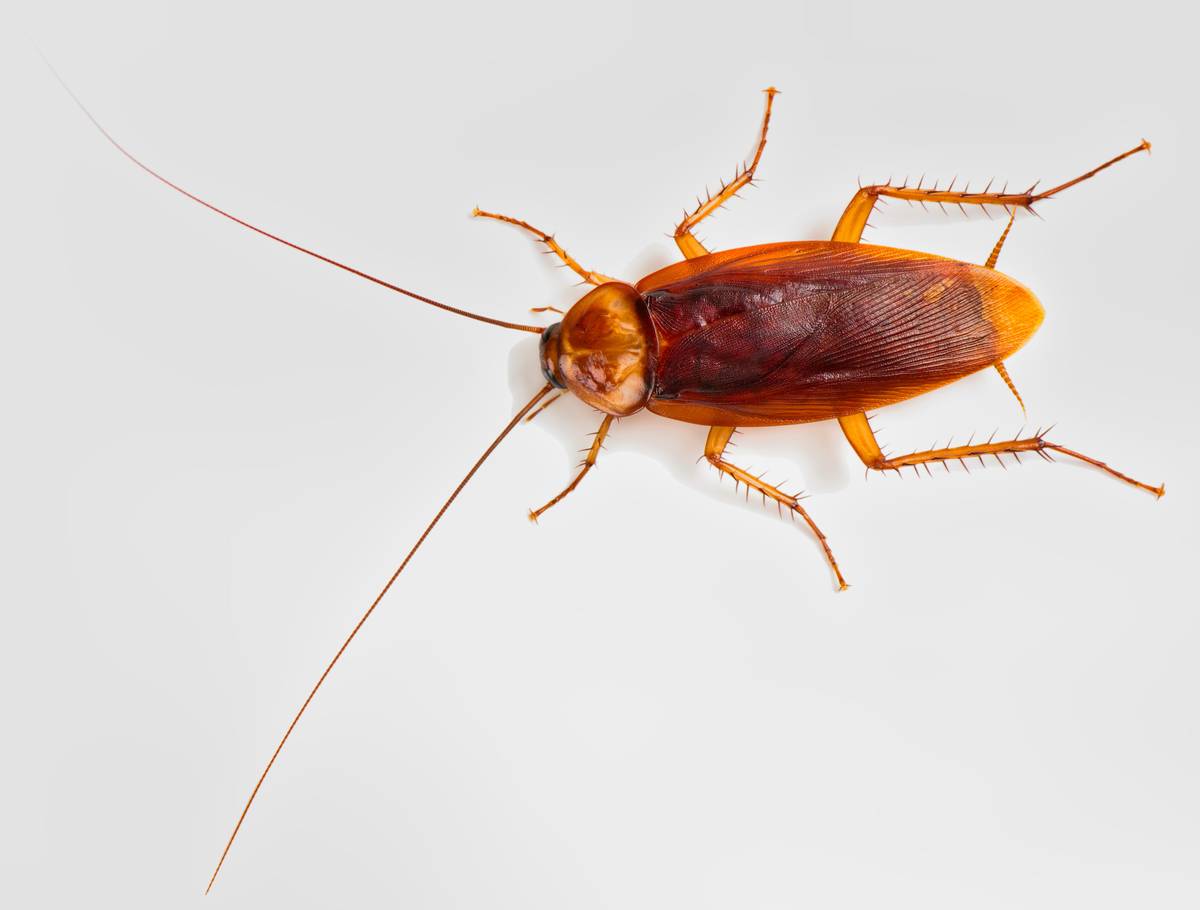


The American Cockroach (Periplaneta americana) mistakenly referred to as a “water bug” is the largest and fastest moving roach commonly found in dwellings, measuring about 1 1/2 inches, it is reddish brown and can fly at high temperatures and can live one to two years. While common to the summer sidewalks of NYC they are fast becoming yet another unexpected result of COVID. They are scavengers and will eat anything including pet food and are good climbers. They are NY tough.
Whether it is due to increased waste in residential buildings, vent traps that have not been recently cleaned, the combination of heat and flash rains, or some other incidental stressor, American Roaches are moving in. Currently they are entering areas through the water evaporated drains in tubs, toilets, sinks along with other locations like electrical closets, slop sinks, and pump rooms. Once in the areas, they go searching for food with some traveling hallways and service lines and getting into other units.
Standard technicians can proactively treat through the use of baits, dusts and placement of monitor traps in some areas but currently many of these areas are bypassed by roaches traveling through vent pipes. Therefore, proper maintenance and exclusion remain a key aspect of any prevention/control programs. Some important measures which need to be addressed by building staff are:
American roaches can climb up walls so on lower floors be sure to keep screens closed and foliage or ground cover off of building. Keep trash away from building, wash down trash areas with bleach or other material as odors attract all types of pests. Please note that when these large roaches die, they should be removed by staff ASAP and not left lying around or in light fixtures for all to see; a vacuum can also be used to catch a stray roach as well.
Cover drains with a stopper at night. You can use rubber drain covers or metal drain screens. Cockroaches are nocturnal, so it’s most important to block their entry at night. The insect can travel quickly, often darting out of sight when a threat is perceived, and can fit into small cracks and under doors despite its fairly large size. Unfortunately, if you have an outdoor dining situation or refuse storage adjacent to your building, we expect these will increase the American Roach population as well as some other pests like rodents, flies and possibly mosquitoes. The reasons being that more food trash is entering street drains and catch basins along with an increase in pest harborage due to temporary barriers and platforms that prevent proper sanitation and accumulate food debris and spilled beverages.
The practice of Integrated Pest Management (IPM) has never been more important than at a time like this. It consists of several measures like sanitation and exclusion as well as proper pesticide use to control pests, many of which have public health implications aside from the obvious quality of life issue.
STANDARD-ARCOVID-7/20 Gil Bloom ACE Entomologist

Hi, My name is Josh Bloom. I'm proud to be Standard Pest Management's customer assurance provider. Besides helping to educate our customers on being proactive when it comes to pest management, I spend my days solving all kinds of bug or nuisance animal related issues. For me, this is a blast! If you have any questions about pests that might be a threat to you, feel free to drop us a line anytime. It's my goal and on a greater scale, Standard Pest Management; to be your number one partner in the war against pests.

Hi, My name is Josh Bloom. I'm proud to be Standard Pest Management's customer assurance provider. Besides helping to educate our customers on being proactive when it comes to pest management, I spend my days solving all kinds of bug or nuisance animal related issues.
For me, this is a blast! If you have any questions about pests that might be a threat to you, feel free to drop us a line anytime. It's my goal and on a greater scale, Standard Pest Management; to be your number one partner in the war against pests
Josh Bloom VP at Standard Pest Management
